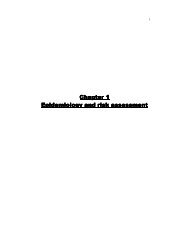Pan Arab Journal of Oncology - Arab Medical Association Against ...
Pan Arab Journal of Oncology - Arab Medical Association Against ...
Pan Arab Journal of Oncology - Arab Medical Association Against ...
You also want an ePaper? Increase the reach of your titles
YUMPU automatically turns print PDFs into web optimized ePapers that Google loves.
objectives & scope <strong>of</strong> the PAJO <<br />
The <strong>Pan</strong> <strong>Arab</strong> <strong>Journal</strong> <strong>of</strong> <strong>Oncology</strong> (PAJO) is the <strong>of</strong>ficial <strong>Journal</strong> <strong>of</strong> the <strong>Arab</strong> <strong>Medical</strong> <strong>Association</strong> <strong>Against</strong> Cancer (AMAAC). It is a<br />
quarterly publication targeting health pr<strong>of</strong>essionals interested in the oncology field. It is a multidisciplinary peer-reviewed journal that<br />
publishes articles addressing medical oncology, malignant hematology, surgery, radiotherapy, pediatric oncology, geriatric oncology,<br />
basic research and the comprehensive management <strong>of</strong> patients with malignant diseases in addition to international oncology activities,<br />
congresses & news.<br />
The journal will be addressed, as a first step, mainly to the pr<strong>of</strong>essionals in the hematology & oncology field in the Middle East<br />
region and North Africa. The goal is to share local & regional research activities news and to be updated with international activities.<br />
We hope, with your support, to achieve our following objectives:<br />
1. Promote and encourage research activities in the <strong>Arab</strong> World.<br />
2. Disseminate & analyze epidemiological local, regional and international data.<br />
3. Update health pr<strong>of</strong>essionals with the most recent advances, news & developments in the field <strong>of</strong> oncology.<br />
4. Improve the level <strong>of</strong> scientific publications arising form the <strong>Arab</strong> World.<br />
5. Keep health pr<strong>of</strong>essionals connected and exposed to the activities <strong>of</strong> different <strong>Arab</strong> cancer societies.<br />
6. Share with our immigrant compatriots their activities & feedback in this field.<br />
7. Involve all health pr<strong>of</strong>essionals interested in the field <strong>of</strong> <strong>Oncology</strong> within the multidisciplinary scope <strong>of</strong> the <strong>Journal</strong>.<br />
8. Encourage post graduates students to submit their research work.<br />
instructions for authors <<br />
1. Manuscript Categories<br />
1.1. Clinical trials<br />
The Editor-in-Chief and an Associate Editor generally review<br />
Reports from clinical trials. Selected manuscripts are also reviewed<br />
by at least two external peer reviewers. Comments <strong>of</strong>fered by<br />
reviewers are returned to the author(s) for consideration.<br />
Manuscript acceptance is based on many factors, including the<br />
importance <strong>of</strong> the research to the field <strong>of</strong> oncology & the quality<br />
<strong>of</strong> the study. Authors should focus on accuracy, clarity, and brevity<br />
in their presentation, and should avoid lengthy introductions,<br />
repetition <strong>of</strong> data from tables and figures in the text, and unfocused<br />
discussions. Extended patient demographic data should be included<br />
in a table, not listed within the text.<br />
Reports from Clinical trials are limited to 3,000 words <strong>of</strong> body<br />
text, excluding the abstract, references, figures, and tables. They<br />
are limited to six total figures and tables. All abstracts are strictly<br />
limited to 250 words. Titles are to be descriptive, but succinct.<br />
Results <strong>of</strong> clinical studies should be supported by a clear<br />
description <strong>of</strong> the study design, conduct, and analysis methods<br />
used to obtain the results.<br />
Reports <strong>of</strong> phase II & III studies should include from the protocol<br />
a clear definition <strong>of</strong> the primary end point, the hypothesized value<br />
<strong>of</strong> the primary end point that justified the planned sample size,<br />
and a discussion <strong>of</strong> possible weaknesses, such as comparison to<br />
historical controls.<br />
Phase I studies will be well received if they have interesting clinical<br />
responses, unusual toxicity that pointed to mechanism <strong>of</strong> action <strong>of</strong><br />
the agents, and important or novel correlative laboratory studies<br />
associated with the trials.<br />
1.2. Review Articles<br />
All reviews must be clinically oriented, ie, at least half the review<br />
must describe studies that detail human impact, marker effect on<br />
prognosis, or clinical trials.<br />
Review Articles should be prepared in accordance with the <strong>Journal</strong>’s<br />
Manuscript Preparation Guidelines, and will be reviewed in the<br />
same manner as Reports from Clinical Trials. Reviews are limited<br />
to 4,500 words <strong>of</strong> body text, excluding the abstract, references,<br />
figures, and tables. The editors also suggest a limit <strong>of</strong> 150 references.<br />
1.3. Editorials / Comments / Controversies<br />
The Editor-in-Chief may solicit an Editorial to accompany an<br />
accepted manuscript. Authors who wish to submit unsolicited<br />
Comments and Controversies should contact the Editor-in-Chief,<br />
before submission to determine the appropriateness <strong>of</strong> the topic<br />
for publication in the <strong>Journal</strong>.<br />
Editorials should be no more than four to five pages in length.<br />
1.4. Articles on Health Economics<br />
Articles about health economics (cost <strong>of</strong> disease, cost-effectiveness<br />
<strong>of</strong> drugs, etc) are highly encouraged.<br />
1.5. Case Reports / Correspondence / Special Articles<br />
Correspondence (letters to the Editor) may be in response to a<br />
published article, or a short, free-standing piece expressing an<br />
opinion, describing a unique case, or reporting an observation that<br />
would not qualify as an Original Report. If the Correspondence is<br />
in response to a published article, the Editor-in-Chief may choose<br />
to invite the article’s authors to write a Correspondence reply.<br />
Correspondence should be no longer than three pages in length.<br />
Special Articles present reports, news from international, regional<br />
societies as well as news from our compatriots.<br />
www.amaac.org <strong>Pan</strong> <strong>Arab</strong> <strong>Journal</strong> <strong>of</strong> <strong>Oncology</strong> | vol 5; issue 3 | September 2012 < 45









